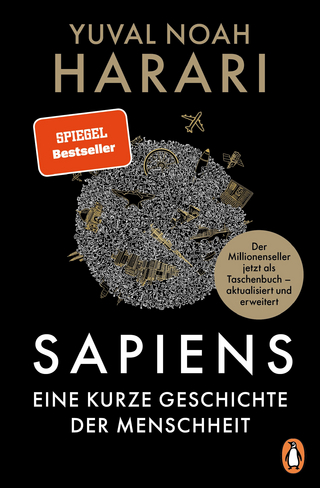
The Tyranny of the Straight Line
Mapping Modern Paris
Seiten
2024
Yale University Press (Verlag)
978-0-300-26764-8 (ISBN)
Yale University Press (Verlag)
978-0-300-26764-8 (ISBN)
A revolutionary study of nineteenth-century Parisian cartography and its role in shaping a modern conception of space
Maps are rarely given the same attention as other print media or art forms in urban history. Author Min Kyung Lee shows their rich potential in this lavishly illustrated study, which brings together maps and other archival materials along with drawings and paintings. She works across disciplines to examine mapping practices in the development of nineteenth-century Paris and the transformative role that urban mapping had on the city’s modernization. Lee investigates Paris’s formation as a modern city, ultimately framing the practice of cartography as a catalyst for the emergence of new spatial and compositional theories.
Beginning with an examination of the emblematic urban plan that Napoléon III gave to the prefect of the Seine, Georges-Eugène Haussmann, in 1853, Lee explores the significance of the map itself; the means of its production through surveying; the methods of its use and reception by architects, engineers, and administrators; and its place in the visual culture of Paris’s modernization. At the heart of this exploration is a focus on orthography in architecture and the new quality of exactitude in modern mapping practices. The precise grid structure of orthographic maps and plans evinced a sense of objectivity, yet it was not without political context and social consequences, as Lee demonstrates throughout.
Maps are rarely given the same attention as other print media or art forms in urban history. Author Min Kyung Lee shows their rich potential in this lavishly illustrated study, which brings together maps and other archival materials along with drawings and paintings. She works across disciplines to examine mapping practices in the development of nineteenth-century Paris and the transformative role that urban mapping had on the city’s modernization. Lee investigates Paris’s formation as a modern city, ultimately framing the practice of cartography as a catalyst for the emergence of new spatial and compositional theories.
Beginning with an examination of the emblematic urban plan that Napoléon III gave to the prefect of the Seine, Georges-Eugène Haussmann, in 1853, Lee explores the significance of the map itself; the means of its production through surveying; the methods of its use and reception by architects, engineers, and administrators; and its place in the visual culture of Paris’s modernization. At the heart of this exploration is a focus on orthography in architecture and the new quality of exactitude in modern mapping practices. The precise grid structure of orthographic maps and plans evinced a sense of objectivity, yet it was not without political context and social consequences, as Lee demonstrates throughout.
Min Kyung Lee is associate professor of the Growth and Structure of Cities at Bryn Mawr College.
| Erscheinungsdatum | 12.10.2023 |
|---|---|
| Zusatzinfo | 42 color + 101 b-w illus. |
| Sprache | englisch |
| Maße | 216 x 279 mm |
| Themenwelt | Geisteswissenschaften ► Geschichte ► Allgemeine Geschichte |
| Geisteswissenschaften ► Geschichte ► Hilfswissenschaften | |
| Geisteswissenschaften ► Geschichte ► Regional- / Ländergeschichte | |
| Naturwissenschaften ► Geowissenschaften ► Geografie / Kartografie | |
| Technik ► Architektur | |
| ISBN-10 | 0-300-26764-9 / 0300267649 |
| ISBN-13 | 978-0-300-26764-8 / 9780300267648 |
| Zustand | Neuware |
| Informationen gemäß Produktsicherheitsverordnung (GPSR) | |
| Haben Sie eine Frage zum Produkt? |
Mehr entdecken
aus dem Bereich
aus dem Bereich
eine Familiengeschichte der Menschheit
Buch | Hardcover (2023)
Klett-Cotta (Verlag)
49,00 €
Eine wahre Geschichte von Schiffbruch, Mord und Meuterei
Buch | Hardcover (2024)
C.Bertelsmann (Verlag)
25,00 €


